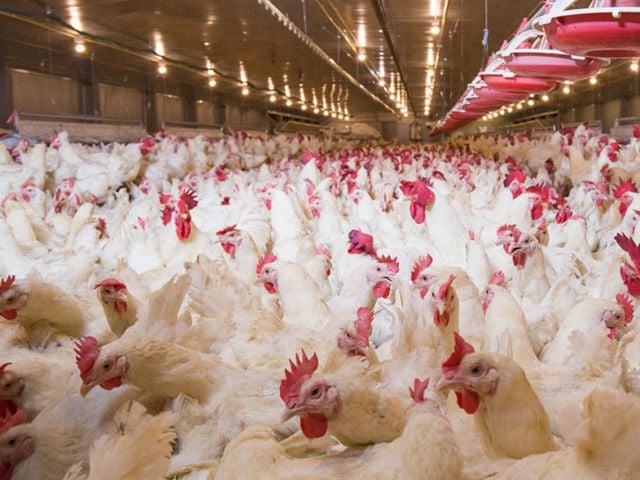Every year, EWG’s editors ask our colleagues on the EWG staff to tell us what they consider the Top 10 environmental stories of the year in each of the two topic areas covered by the two blogs on EWG’s website – Enviroblog and AgMag. All of us – from senior scientists to policy analysts to web designers to support staff and even management – get a chance to nominate as many stories as we want. From those two lists each staff member then votes for what she or he considers the three most important stories in each category. (You can read the Enviroblog Top 10 here.)
Some stories straddle both blogs, but broadly speaking the topic areas on AgMag are agriculture (of course) generally, pesticides, genetically engineered crops, drought, soil erosion and polluted runoff. Enviroblog’s topics range widely across food, toxic substances in food and consumer products, fracking, climate change, water contamination and much more.
Not surprisingly, the staff often focuses on stories in issue areas that EWG works on, but that’s not always the case, as this list reflects. In descending order, here are AgMag’s Top 10 stories of the year, as chosen by EWG’s staff. They were mostly bad news:
- In October, the Environmental Protection Agency approved the use of EnlistDuo, a new herbicide mixture developed by Dow AgroSciences to combat “superweeds” that have become resistant to widely used herbicides such as Dow’s glyphosate, sold as Roundup. The new product, designed to be used with genetically engineered corn and other crops, combines glyphosate with 2,4-D, a much older herbicide linked to a wide array of serious health problems. EWG saw this coming and worked hard to mobilize opposition to EPA approval, warning that the Dow product would perpetuate a dangerous “chemical treadmill” that would lead to even more “superweeds.” But EPA went ahead, saying its decision had sufficient safeguards.
- After a nearly three-year roller coaster, Congress passed a five-year farm bill in February and sent it to President Obama. There were a few good elements that EWG fought hard to win – ending the discredited “direct payment” subsidies to farmers and restoring conservation requirements on growers who accept federal support. But overall it was a bad bill, with too many provisions that EWG couldn’t accept, including absurdly generous and wasteful crop insurance subsidies and cuts to the SNAP (food stamps) program for low-income Americans.
- The campaign to require labeling of genetically engineered foods was a yearlong story on many fronts, and EWG was active on most of them. On Capitol Hill, we organized lobbying efforts to support pro-labeling legislation, mobilizing prominent chefs from around the country and Ben Cohen of Ben & Jerry’s ice cream to make the rounds of legislators’ offices. The food industry, meanwhile, spent tens of millions of dollars hiring lobbyists to fight the legislation. That’s on top of the $20 million it poured into defeating, by the slimmest of margins, a labeling referendum in Oregon.
- California’s three year-old drought is stressing the state’s people, its water supply and its huge agricultural areas. Just recently a study indicated that it’s not only worse than the Dust Bowl drought of the 1930s, it’s the worst California drought in at least 1,200 years.
- The federal Renewable Fuel Standard that mandates mixing large amounts of corn ethanol into gasoline has been the subject of an ongoing battle. EWG has worked hard on this issue, pointing out that the requirement hurts consumers, drives up greenhouse gas emissions and delays development of biofuels that would be better for the environment. In the end, the EPA punted and postponed a decision to next year, even as ethanol production and profits soared.
- Late in the year, a “meta-analysis” of 115 earlier studies concluded that pesticide-free organic farming is much more productive than previous estimates, and that with minor refinements it could easily yield enough to feed the world.
- Last summer, half a million residents of Toledo, Ohio lost their drinking water after poisonous algae bloomed wildly in Lake Erie, the source of the city’s water supply. Although pollution from a number of sources contributed, there was a clear consensus that put much of the blame on poor agricultural practices that allowed farm runoff loaded with nitrogen and phosphorus to pour into waterways
- Congress passed a farm bill this year, but that won’t put an end to the ongoing “food fights” that face Congress and President Obama next year. The list goes far beyond GE labeling and includes healthy school meals, excessive antibiotic use on farms, nutrition assistance, food additives and more.
- When some big food companies and members of Congress made a push last summer to weaken new federal requirements for healthier school lunches, some were surprised when the School Nutrition Association took their side, claiming to speak for the “lunch ladies” who prepare meals in the nation’s schools. Well, it turned out that the Association doesn’t represent many cafeteria workers, and organizations that do were firmly against weakening the federal standards. In the end, the federal nutrition rules survived, but the battle continues.
- Throughout the farm belt and beyond, agricultural pollution and soil erosion are huge problems, fouling rivers, streams, lakes and public drinking water supplies. EWG’s Midwest office in Ames, Iowa, has been a leader in documenting this slow-motion disaster with groundbreaking research reports such as “Washout” and “Washout Revisited.” EWG also fights for farm conservation programs and funding and argues that agriculture should no longer be exempt from complying with most environmental laws.


